*This blog post contains affiliate links, so we may earn a small commission when you make a purchase through links on our site at no additional cost to you.
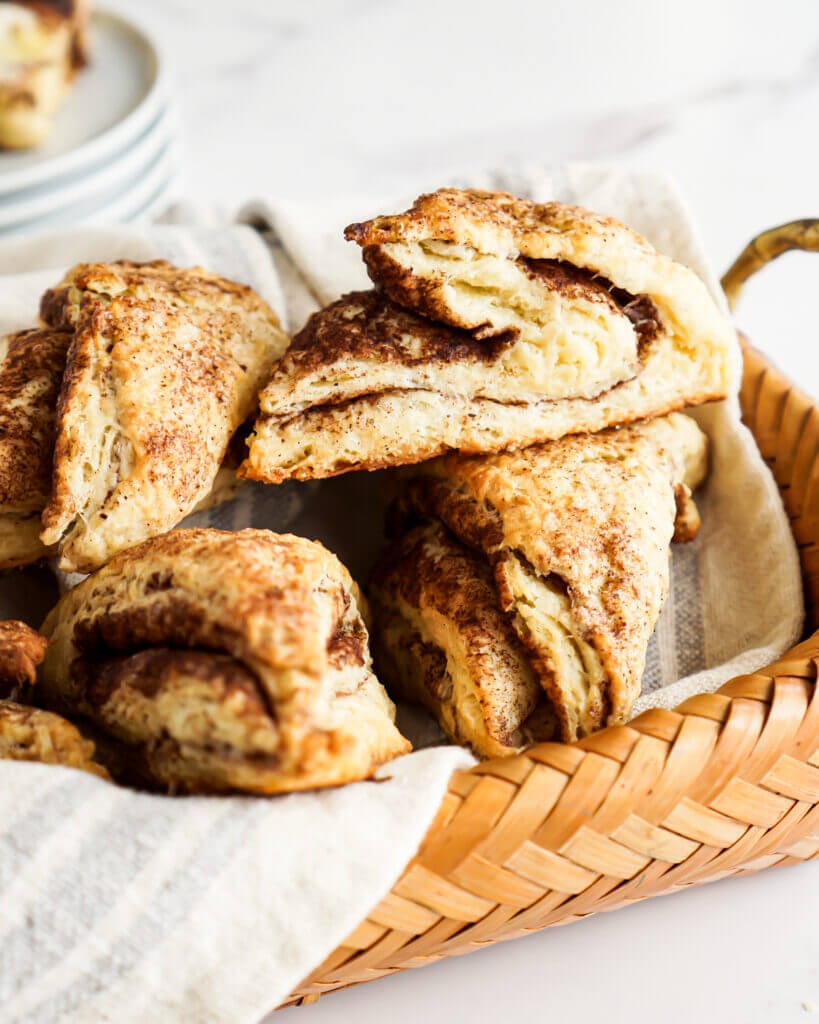
What is it about cinnamon that just warms the tummy? These scones do just that! They are the perfect treat to warm you up on a cold winter morning, accompanied with a hot cup of coffee or tea. These buttery cinnamon scones are made with simple ingredients and are easy to whip up. The scones are tender, light and are enjoyed with a slab of melted butter. The cinnamon covers each flaky layer (with a pinch of nutmeg for good measure) to create a bite of warm spice every time!
In the winter I find comfort in my kitchen with the oven on, mixing up batches of treats. For me, the simple act of blending ingredients by hand, like kneading dough or rubbing butter and flour with my fingers, has a calming effect! There’s nothing more enjoyable than waking up to the smell of buttery cinnamon filling the air.
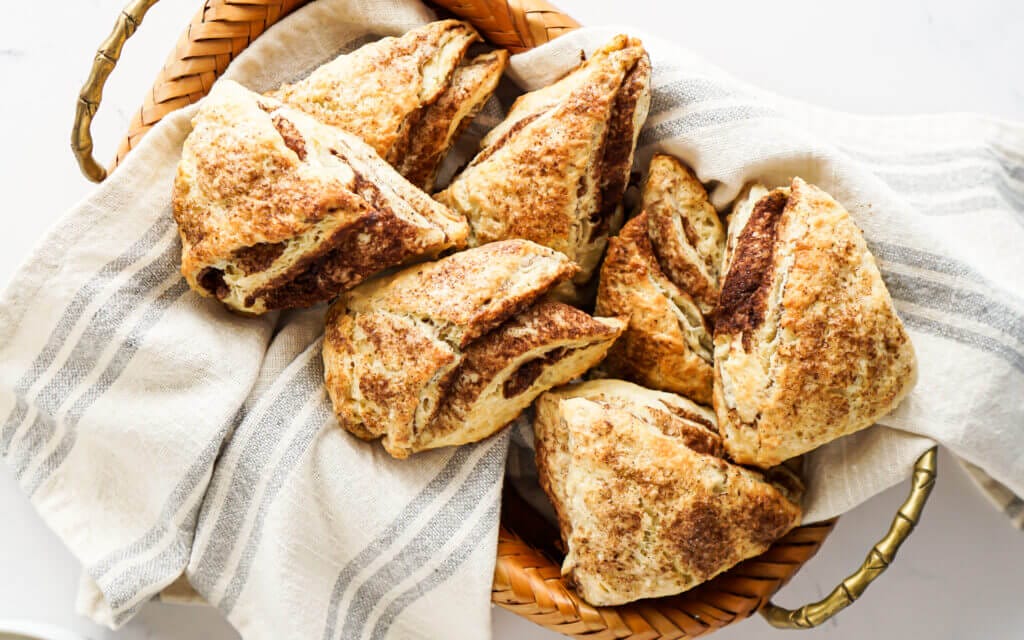
Ingredients
- All-purpose flour
- Granulated sugar
- Unsalted butter
- Buttermilk or sour milk
- Whipping cream (heavy cream or whole milk)
- Egg
- Ground cinnamon
- Ground cloves
- Baking powder & baking soda
- Salt
Variations
- Substitute the granulated sugar in the filling and topping with brown sugar for a richer flavour. You can also add currants or finely chopped nuts to the filling for added flavour.
- For a sweeter scone variation drizzle the top of each scone with a simple glaze. Mix warm water or milk with icing sugar, approx. 1 cup sugar to 1-2 tablespoons of liquid.
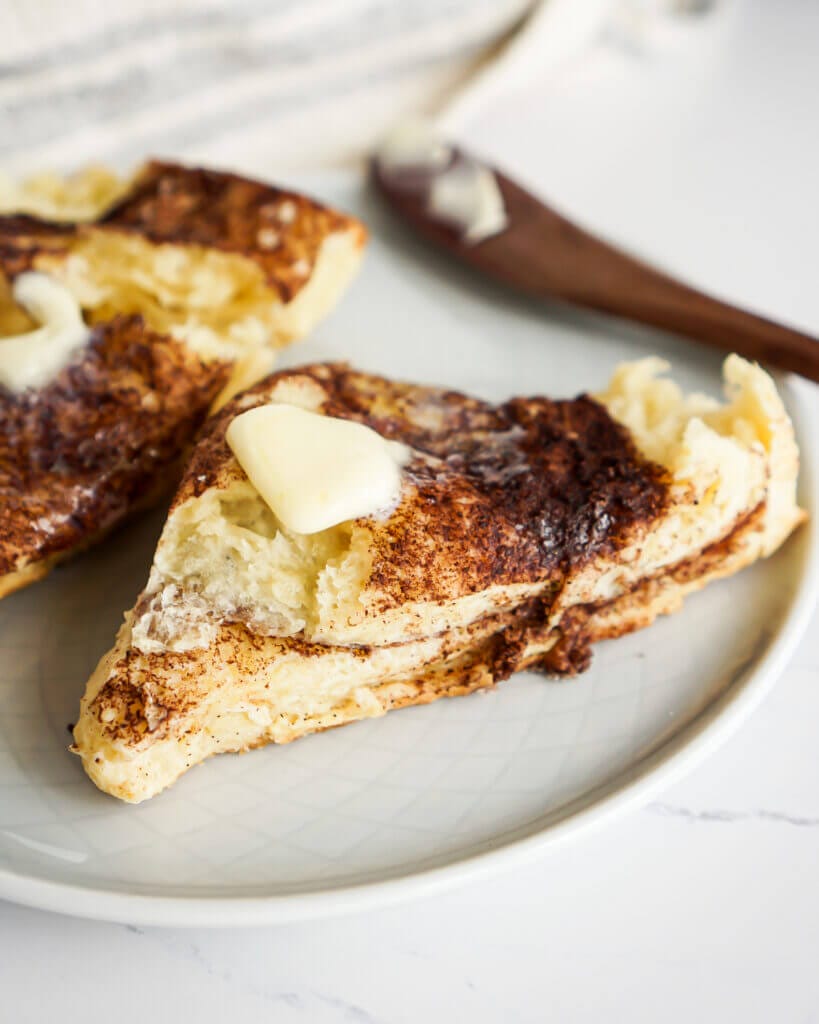
What Are Scones?
Scones are a type of ‘quick bread’ and are simple to make with not much time involved. Typically they are not sweet and are paired with clotted cream and jam. These cinnamon scones are no exception to that! They are cinnamony, not sweet and take no time at all to make. They look more difficult than they actually are, I promise!
How to Cut Butter Into Flour
There are a few ways to cut butter into flour but the most important rule to remember is to cut your butter in smaller cubes first, approx. 1 inch x 1 inch. Then coat each piece in the flour before you start. You also want to make sure you are working with cold butter from the fridge.
- By Hand – You can use your hands by picking up the flour and butter in your fingertips and gently rubbing the butter and flour between your fingers and thumb. Continue to pick up flour and butter and rub between your fingers until you have small pea size crumbs or coarse crumbs.
- Two Knives – Using two butter knives, one knife in each hand, simply cut the butter into the flour to create little pieces/coarse crumbs.
- A Pastry Cutter – A pastry cutter is designed to roll back and forth to cut the butter into the flour. Use a knife to scrape any stuck-on butter and continue to cut into the flour until you have small pea size crumbs or coarse crumbs.
You want to make sure to keep your butter cold, if you’ve worked your butter too much while making your scones you won’t get those beautiful layers. Simply place the pan of scones in the freezer for 5 minutes before baking. This is to help firm up the butter before baking and give you those layers for a perfect scone.
What Should the Dough Look Like?
The dough should be a little more on the ragged side and a touch dry. Be careful not to add more liquid, scones are meant to be a little drier and denser. You just want the dough to come together when pressed but you may still have pieces that don’t stick (that means you’ve got it right). You should not have a sticky dough! If your dough is done correctly you will have tender scones.
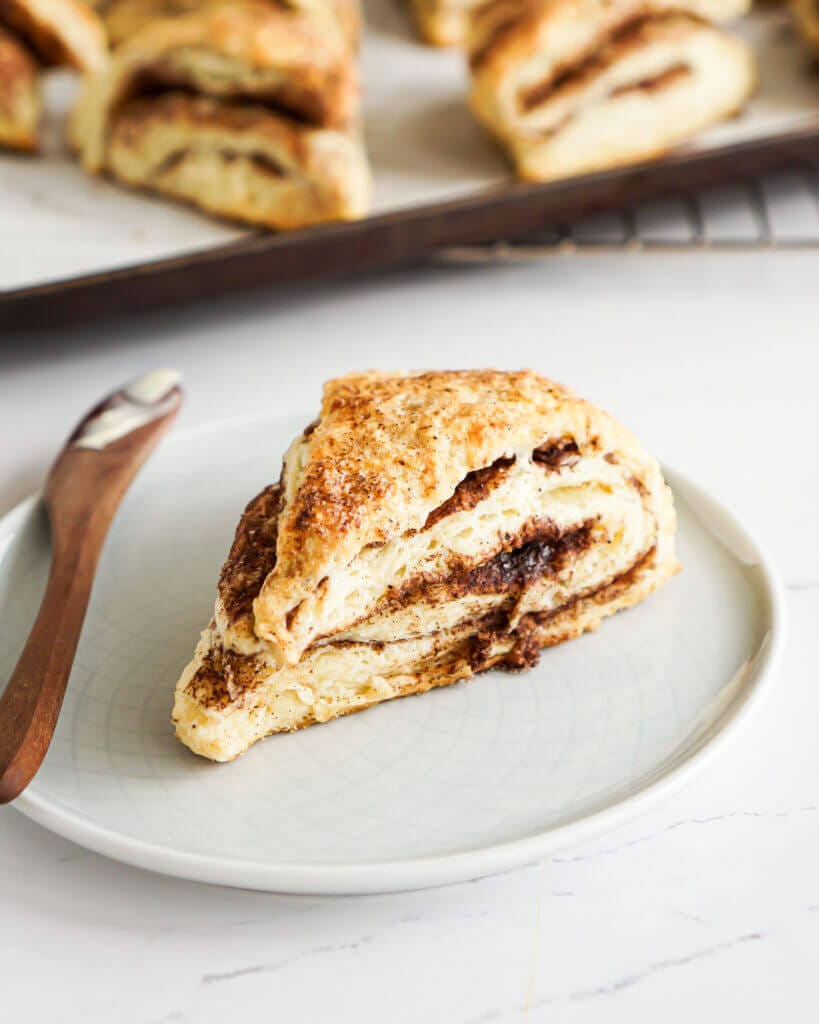
How To Make Cinnamon Scones
Step One: In a large mixing bowl add cold butter cubes to the flour mixture. Using a pastry blender, cut butter into the flour until coarse crumbs form.
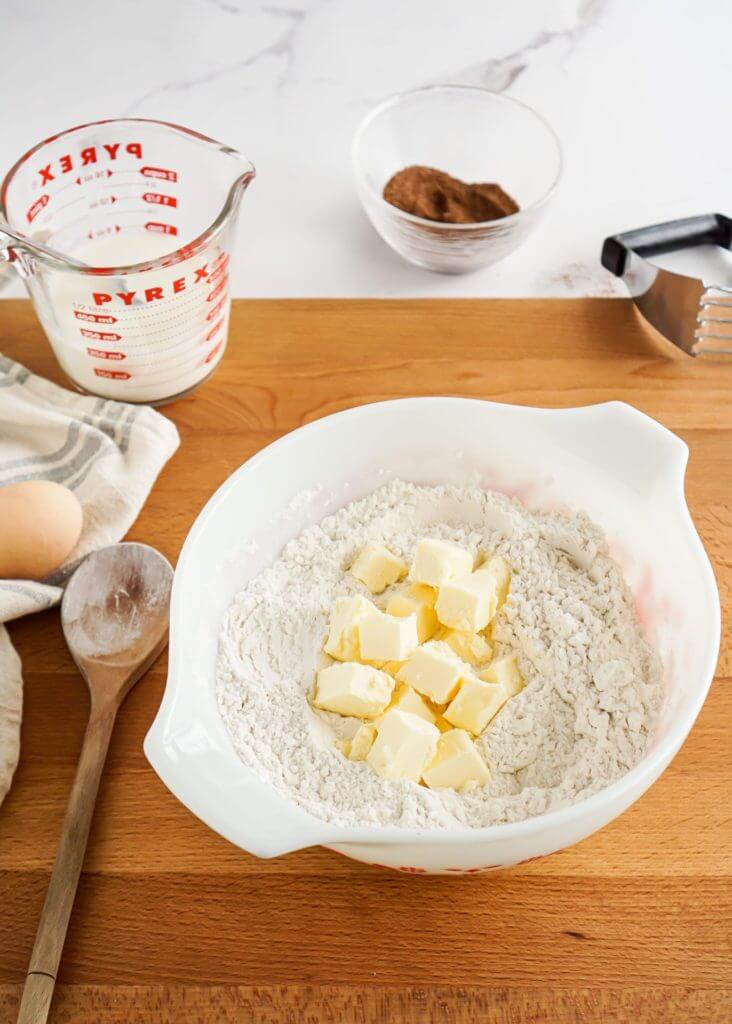
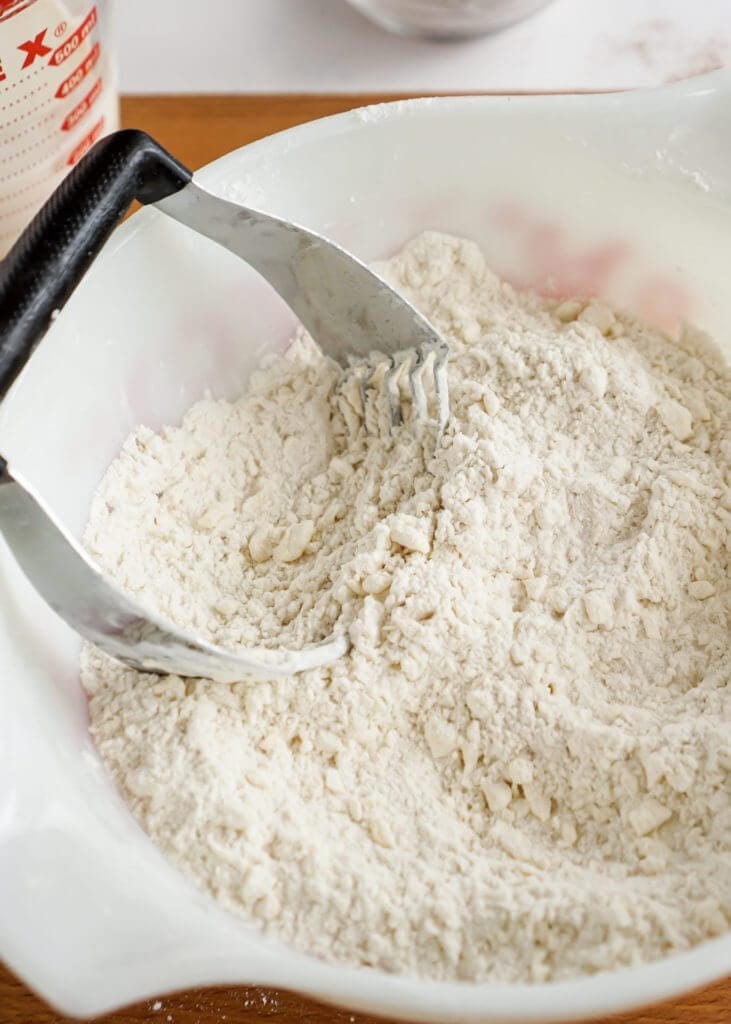
Step Two: Add liquid to your flour mixture. Using a fork mix until dough becomes ragged. Be careful not to overmix.
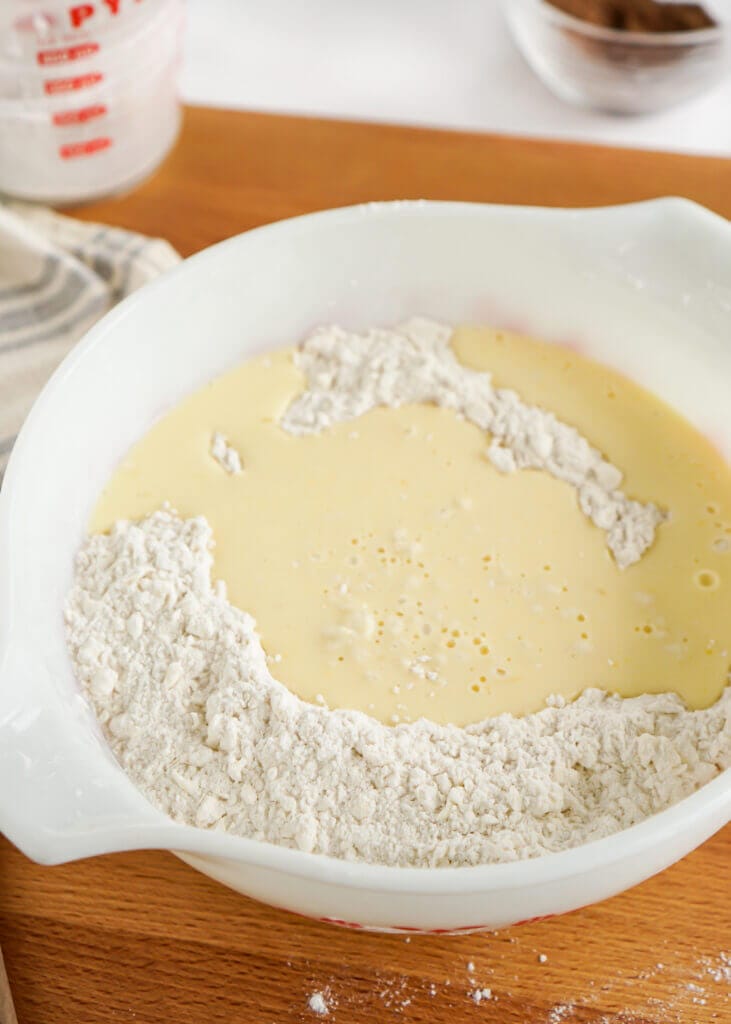

Step Three: Transfer dough onto a lightly floured work surface. Shape the dough using a pastry scraper into an 8″ x 10″ rectangle, cover in half of the cinnamon mixture & fold over. Repeat one more time.
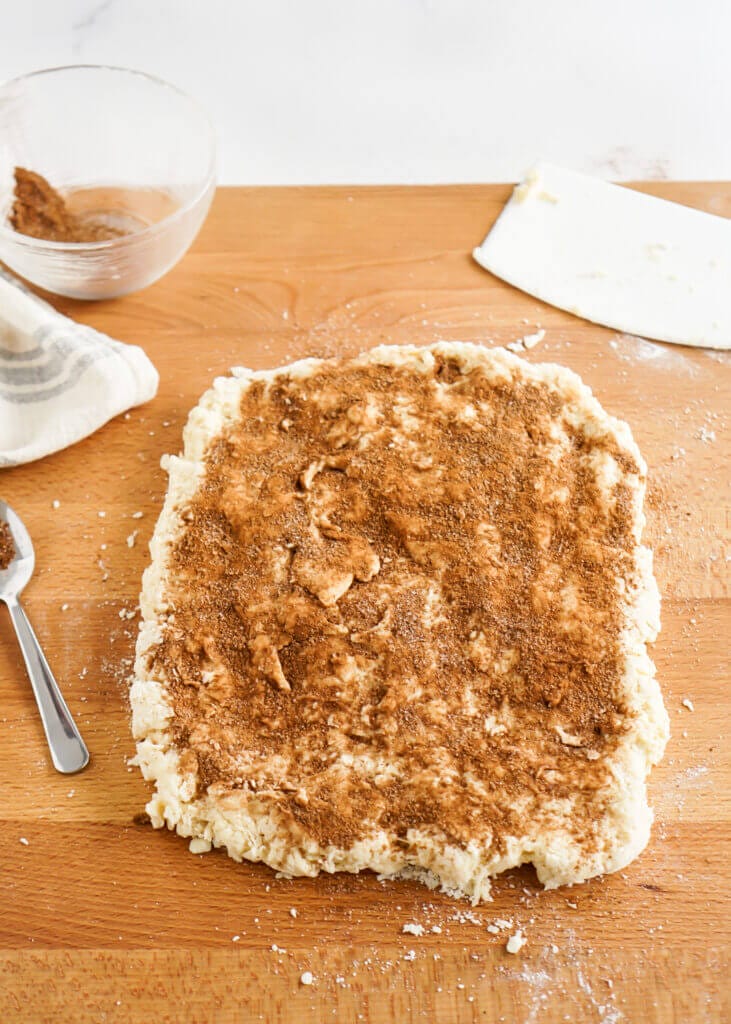
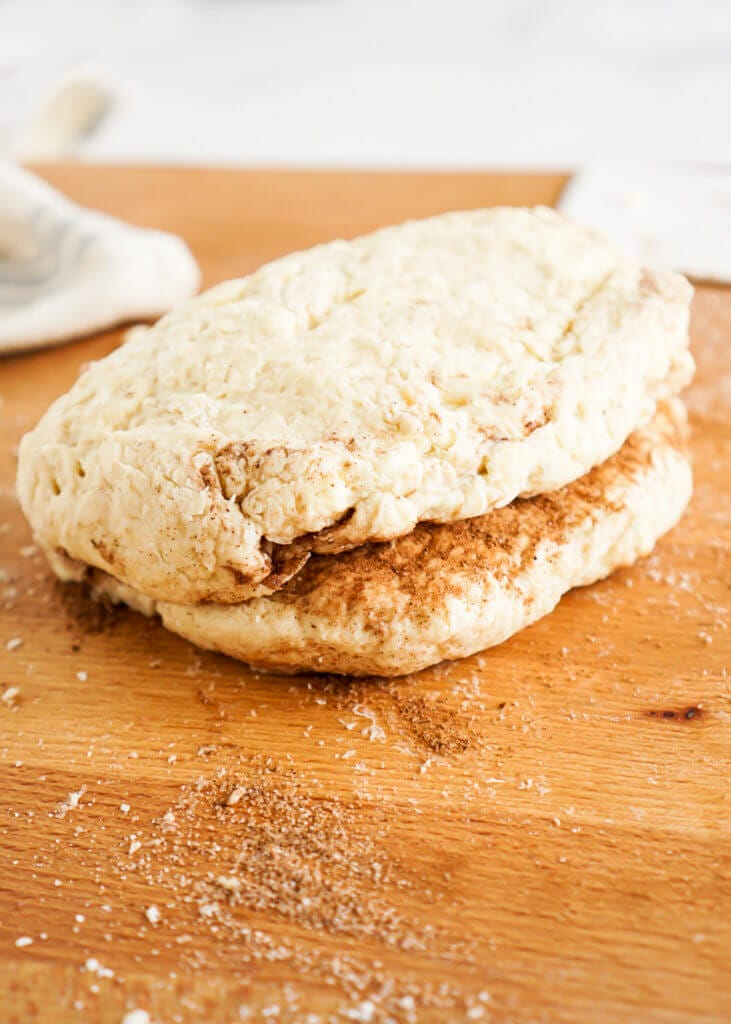
Step Four: Gently shape the dough into a circle, and cut into 8 equal pieces. Place the scones on your prepared cookie sheet and pinch the tips of each scone. Brush the top of the scones with whipping cream, sprinkle cinnamon sugar on top.
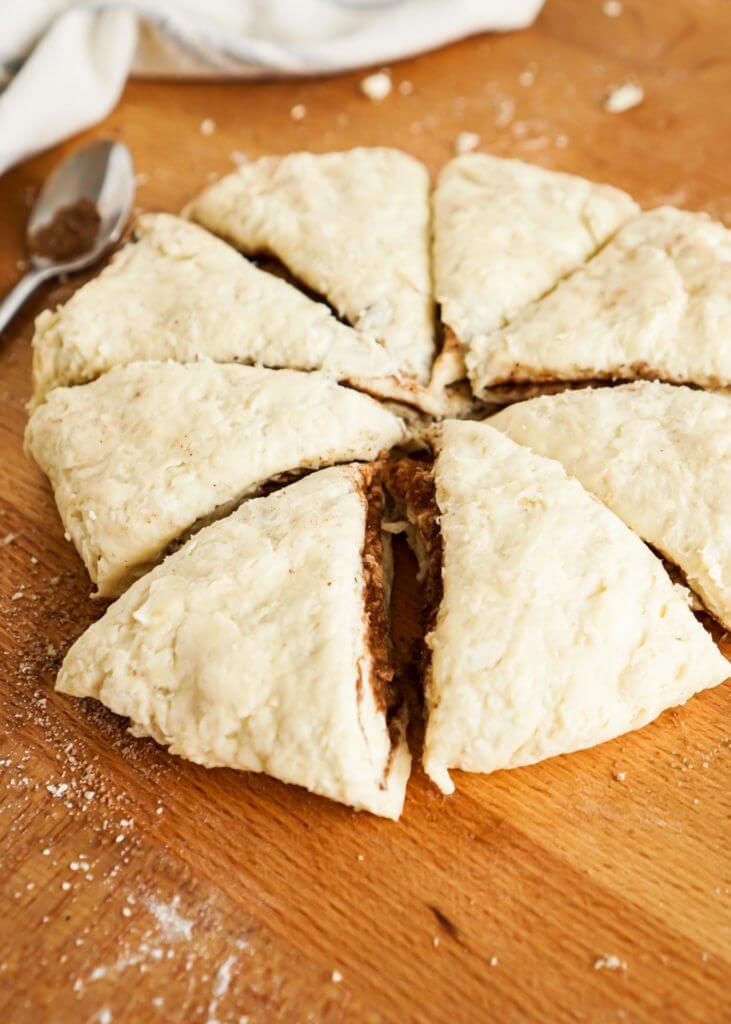
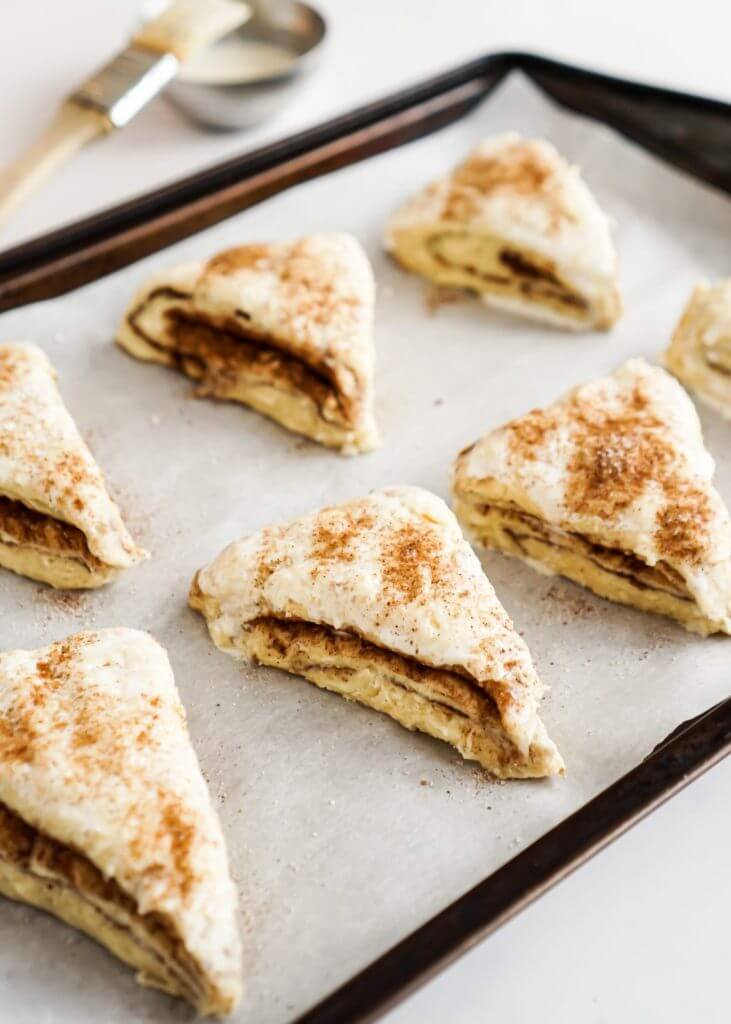
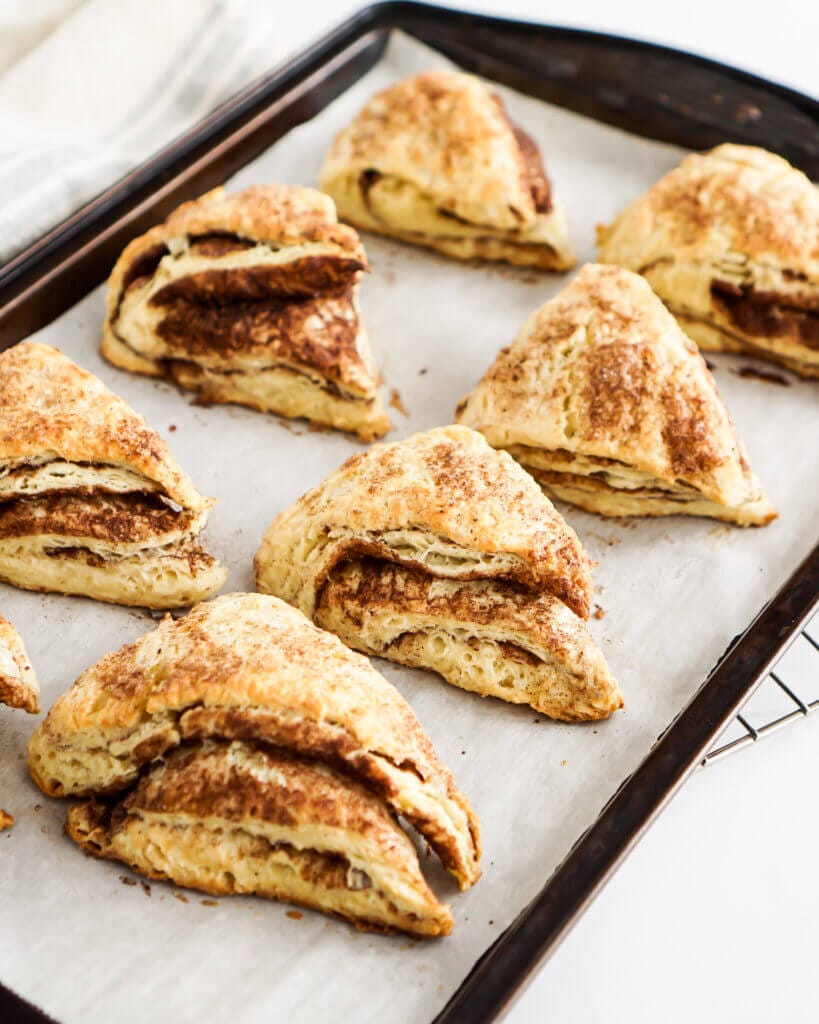
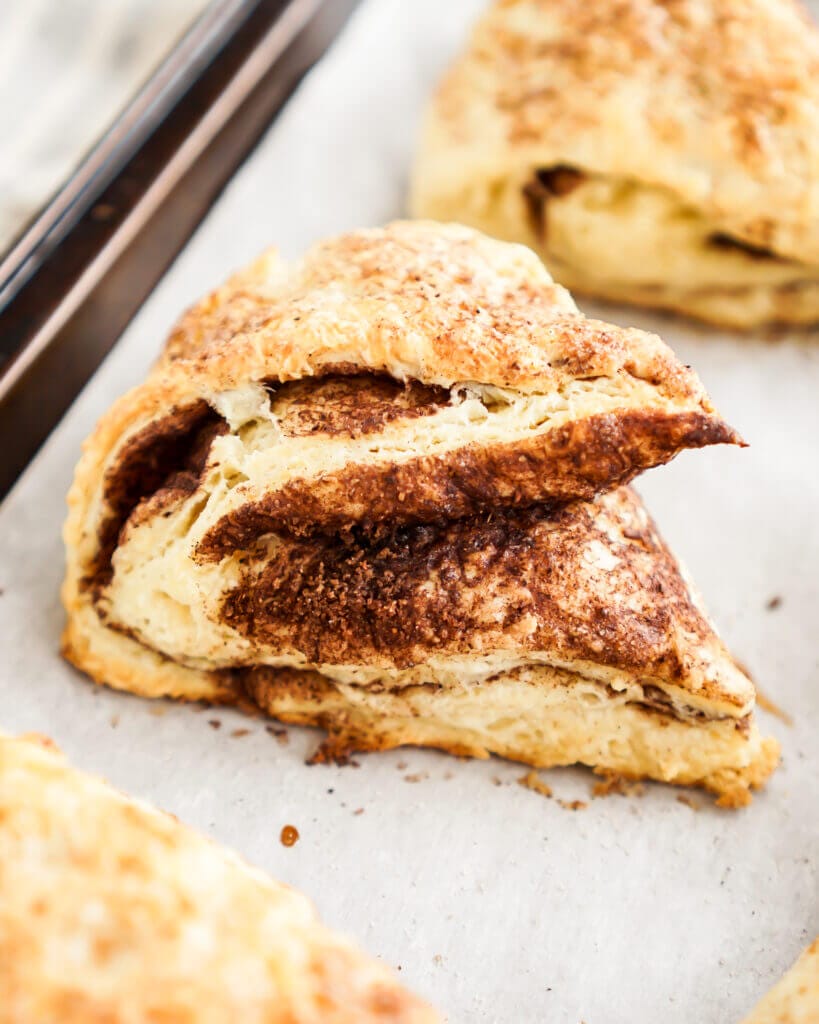
Note: I’ve re-tested the recipe as some people have mentioned a sticky dough. The issue is using the metric measurements. If using the metric measurements add approx. 60 grams of all-purpose flour. This recipe was written in US Cups and the conversion to metrics is resulting in a sticky dough. Your dough should be easy to handle (add more flour if needed).
PrintCinnamon Scones
These cinnamon scones are classic buttermilk scones covered in cinnamon and then layered on top of themselves to create swirls of cinnamon bursts. They are flaky, buttery and not sweet at all. Enjoy warm scones with your morning coffee!
- Prep Time: 15 mins
- Cook Time: 15 mins
- Total Time: 30 mins
- Yield: 8 1x
- Category: Breakfast
- Method: Baking
- Cuisine: Scottish
Ingredients
- 2 1/2 cups all-purpose flour
- 3 Tablespoons granulated sugar
- 2 teaspoons baking powder
- 1/2 teaspoon baking soda
- 1/4 teaspoon salt
- 1/2 cup cold unsalted butter, cubed
- 1 cup buttermilk or sour milk
- 1 large egg
Filling
- 1 Tablespoon granulated sugar
- 2 1/2 teaspoons ground cinnamon
- 1/8 teaspoon ground cloves
- pinch of salt
Topping
- 2–3 Tablespoons whipping cream (or whole milk)
- 2 Tablespoons sugar
- 1/2 teaspoon ground cinnamon
Instructions
- Preheat oven to 400˚F.
- Line a baking sheet with parchment paper and set aside.
- In a large bowl, combine flour, sugar, baking powder, and baking soda, whisk together.
- Add butter to flour mixture. Using a pastry cutter, cut butter into flour mixture until it resembles coarse crumbs.
- In a small bowl add buttermilk and egg, whisk together.
- Make your filling. In another small bowl add cinnamon and sugar, ground cloves and salt together, mix well and set aside.
- Create a well in the centre of the flour and butter mixture. Pour the buttermilk mixture into the well. Using a fork bring the mixture together just until the dough comes together and is ragged.
- Turn out onto a lightly floured surface. Bring the scone dough together (using a pastry scraper), folding it over itself a few times. (approx. 6-8 times, DO NOT OVERWORK IT).
- Pat out to an 8″ x 10″ rectangle. Sprinkle half of the cinnamon and sugar mixture all over the top and press into the dough. Fold the rectangle in half and gently press out to another 8″ x 10″ rectangle. Sprinkle the rest of the cinnamon and sugar mixture on the top, press in and fold over again.
- Now, gently shape the rectangle into a circle (your dough should be approx. 1″ to 1 1/2″ in height). Using a large sharp knife, cut into 8 triangles for large scones.
- Place each triangle on your prepared baking sheet 2 inches apart.
- Using your fingers press the tip of each triangle down to pinch closed (this will help the scones stay together as they rise).
- Brush the tops of the scones with a generous amount of whipping cream.
- Make your topping. Add cinnamon and sugar together. Sprinkle over the tops of the scones.
- Place your baking sheet of scones in the freezer for 5-8 minutes (this will help firm up your butter to create nice light layers).
- Bake for 15 minutes or until the bottoms are golden brown and the middle is set.
- Enjoy warm.
Notes
If using the metric measurements add approx. 60 grams of all-purpose flour. This recipe was written in US Cups and the conversion to metrics is resulting in a sticky dough. Your dough should be easy to handle (add more flour if needed). For best results use the US measurements.
Scones are best enjoyed the same day. Store in a tin or an airtight container for one to two days. Reheat in a 350˚F preheated oven for approx. 8 minutes.
My favourite tool for making scones is a soft plastic pastry scraper. It really helps with folding and working with the dough.
Nutrition
- Serving Size: 1 scone
- Calories: 508
- Sugar: 5.3g
- Sodium: 141mg
- Fat: 10.1g
- Saturated Fat: 5.8g
- Unsaturated Fat: 0
- Trans Fat: 0
- Carbohydrates: 91g
- Fiber: 3.3g
- Protein: 12.7g
- Cholesterol: 39mg
FAQ’s
The secret to a flaky scone is cold butter! You don’t want to overwork the butter so that it melts down. You want pea-size butter crumbs throughout the dough that stay firm. A good trick to help your butter stay firm is to pop the dough into the freezer to firm the butter back up before baking. This will create the best scones.
No, scones and biscuits are different. Although they are both similar in style and in ingredients the outcomes are different. A biscuit is typically plain, soft on the inside and flaky whereas a scone will be more on the crumbly side and can have other ingredients added to it. It still may have flaky layers but the inside consistency will be denser than a biscuit.
Yes, if you want to add fruit or nuts to cinnamon scones add them with each layer of cinnamon and gently press them into the dough. Currants would make a great addition to this cinnamon scone recipe.


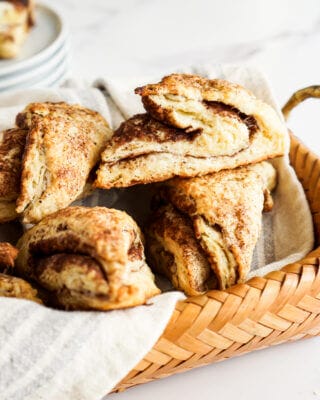

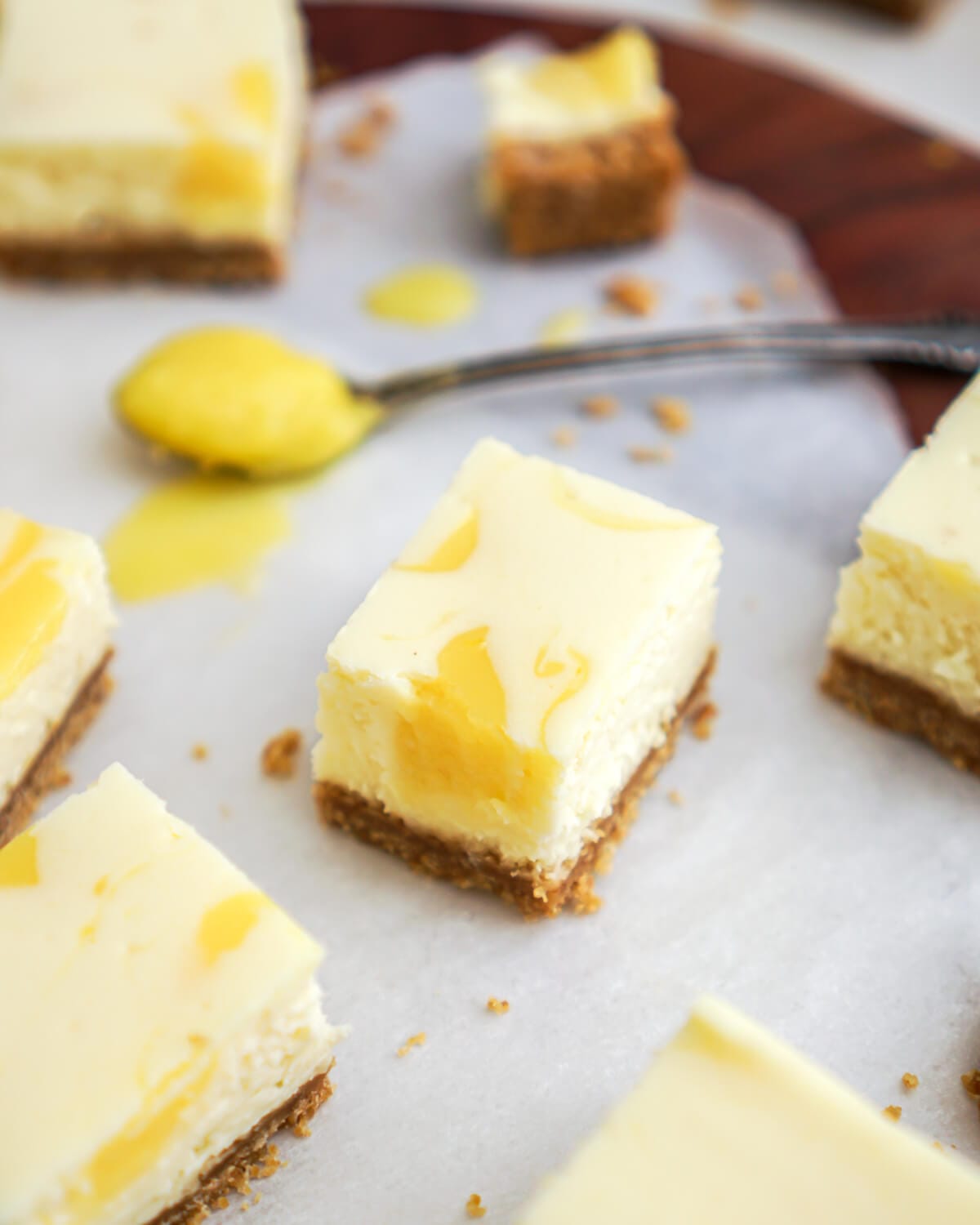
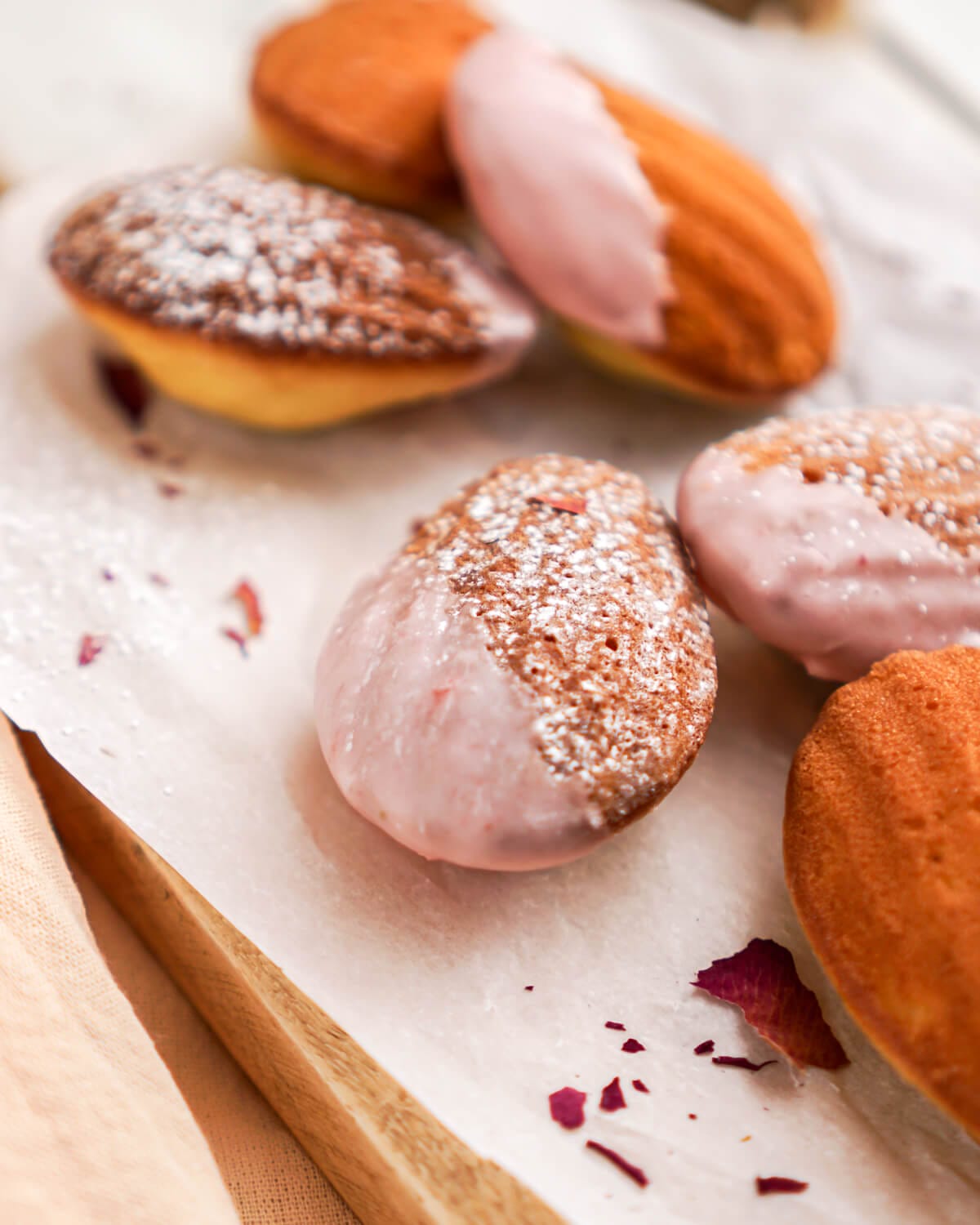
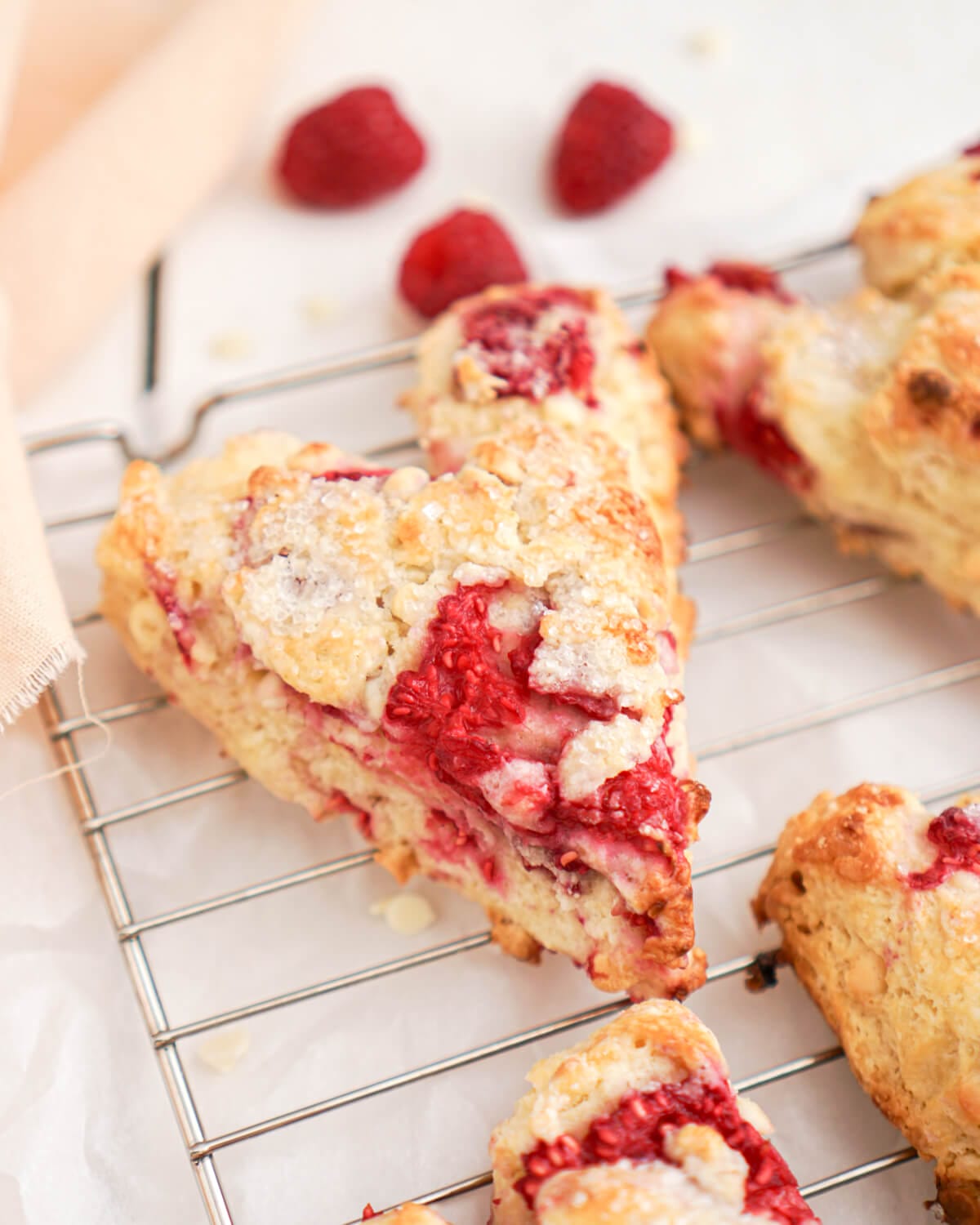
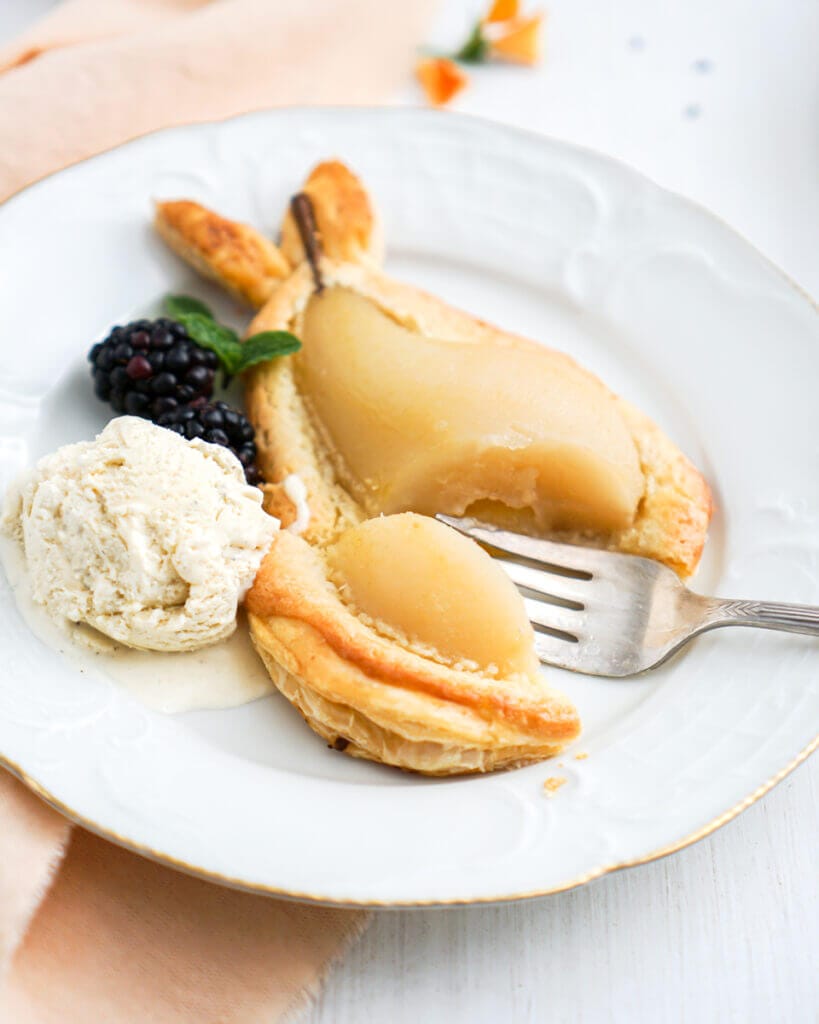
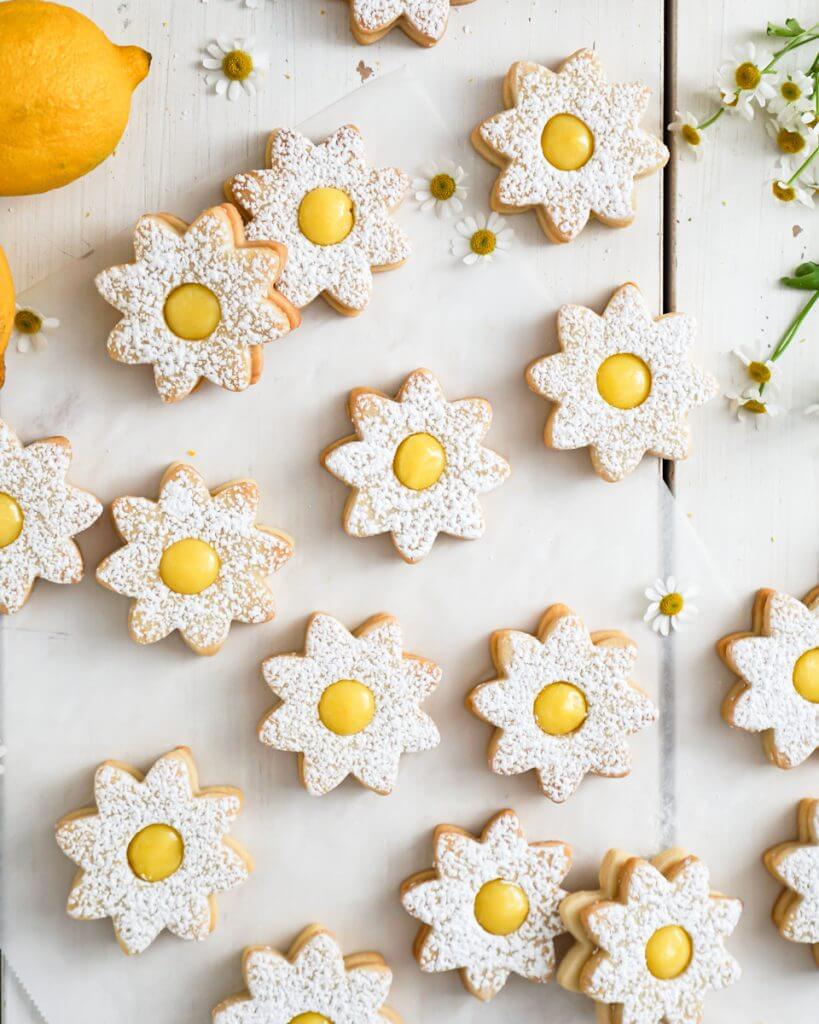

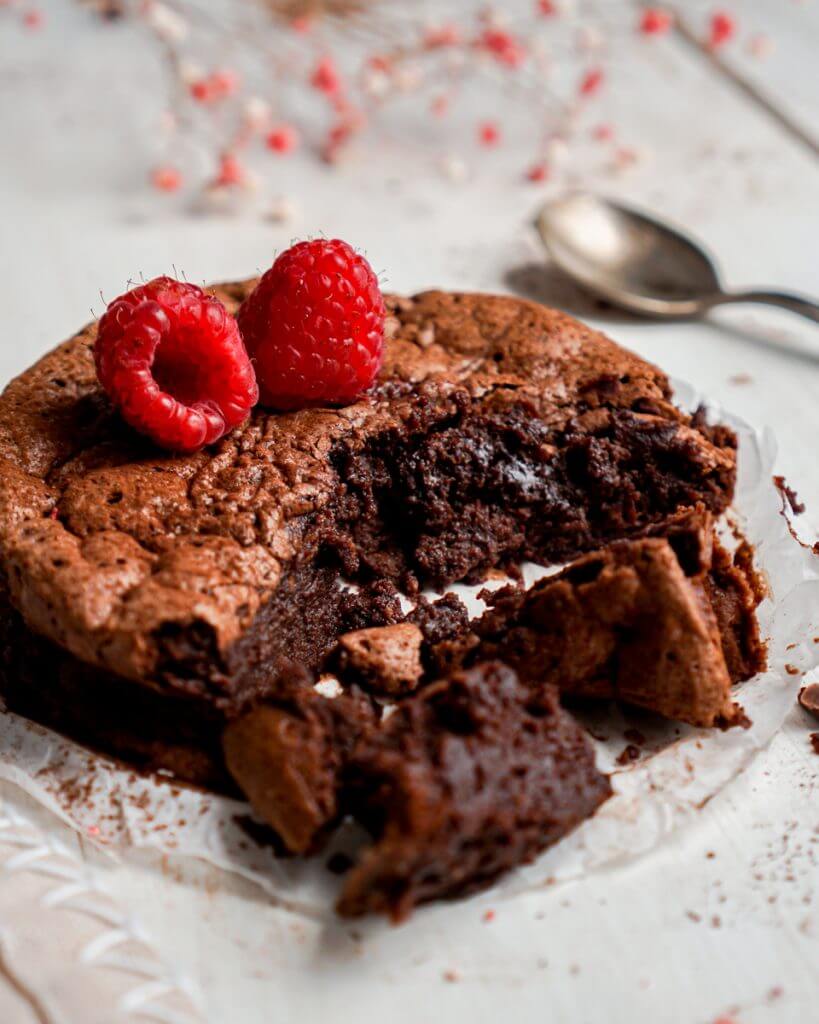
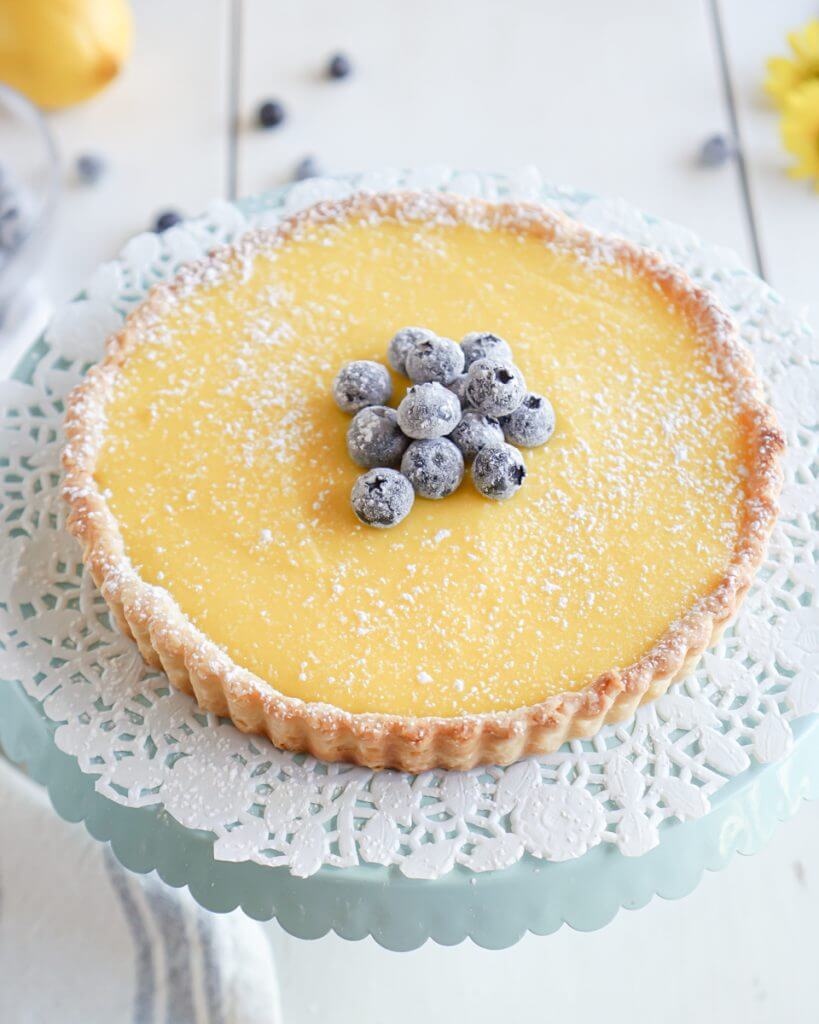
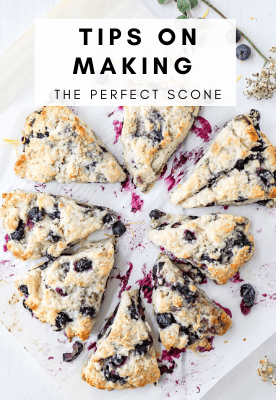




Leave a Rating and Comment!
I love hearing from you! Leave a comment with any questions or how your recipe turned out (your email address will not be published)!
Absolutely awesome! So easy. The tender crumb and the cinnamon really have sold me on trying more recipes.
The perfect treat that is not too rich or too sweet. 5 stars.
Ohhh I’m so happy you like the scones! They are one of my favourites! Thank you for sharing and for the rating! Happy Baking!
Good heavens! These are RIDICULOUSLY delicious! I’ve never checked out https://www.bakingforfriends.com before, but I’ll be back.
Hi Jan, thanks for checking out the blog 🙂 These scones are one of my faves too! Hope you enjoy the recipes and happy baking!
My dough was super sticky, looked nothing like the picture ( ragged ), it was crazy sticky. Any advice on what I might have done wrong? But, they were delicious. Will definitely make again
Hi Yolie, thanks for taking the time to write. You are correct, the dough shouldn’t be sticky. I’m not exactly sure what happened but a few issues may have been the measurements of flour and liquid being a little off. Sounds like it may have been either too much liquid or not enough flour. Also make sure your butter is cold and not soft. Did you use the US or Metrics measurements on the recipe?
In the future if you find the dough is sticky while handing it, add a little more flour (approx. 1 Tbsp at a time). I’m glad to hear you still enjoyed the scones though. Let me know how it goes the next time you make the recipe. Happy baking 🙂
Good dough to work with, and the scones had a good texture. I found them too mild in flavor. I noticed immediately that there was no salt in the dough and that seemed strange. I put a pinch in, but it needed more. Next time, I will put at least a 1/4 teaspoon in. The dough could also probably use some vanilla and/or almond extract. I would also probably increase the filling amount a little. Still, I know some people like plain scones, and these are fine.
Hey Peter, thanks for taking the time to write a review. I do have a small amount of salt written in the recipe but yes these scones are not sweet or salty. You can definitely add more salt and filling to up the flavour to your desire. Happy Baking and thanks for visiting the blog 🙂
These were SO good!!! Flaky like I’ve been wishing for for years. My new scone standard. I did tweak a bit. Added a 1/4 tsp cardamom to the filling and used brown instead of white sugar. Also added a TB of brown sugar to the dough. And 2 TB of shortening and 6 TB of butter (cause I ran out of butter). The dough was wet but a sprinkle of flour on the counter where I did the folding fixed that. Thanks so much for the recipe!
So glad to hear you enjoyed the scones Madeline. Love the addition of cardamom too!
Hey there, I also had a severe issue with this recipe with the dough being extremely sticky. It was nearly impossible to work with. I used metric measurements (and am a professional baker!) and still couldn’t get it to behave for me. I’m attempting to firm them up in the freezer right now before baking, but is it possible the measurements are off??
Hi Christine, thank you for taking the time to leave a comment and for all the details. I’ve gone back and re-tested the recipe using the metric conversion and it looks like it is off about 60 grams. The recipe was written in US cups and is not translating accurately to the metric version. I’ve made notes in the recipe and above the recipe card for anyone who chooses to use metric. Thank you again for reaching out and I’m so sorry the recipe was difficult to handle. Hopefully, they ended up tasting good. I hope you try another recipe and can trust BFF again! Best, Alie.